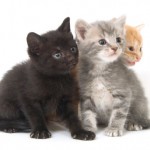An ongoing dialogue on HIV/AIDS, infectious diseases,
August 14th, 2009
Who Gets Toxoplasmosis in the United States?
 This might seem bizarre, but one of the reasons I chose to go into Infectious Diseases as a field was the names of the diseases (and often the micro-organisms that caused them) sounded so darn cool.
This might seem bizarre, but one of the reasons I chose to go into Infectious Diseases as a field was the names of the diseases (and often the micro-organisms that caused them) sounded so darn cool.
For example, if you were a science fiction writer you could hardly come up with a better-sounding name for a mysterious disease than “toxoplasmosis.” Or its full name, “Toxoplasma gondii”.
Major Pribulon, I’d advise against taking your Colonial Defense Armada into Sector 18, Ambrilla Zone — I hear reports of a widespread outbreak of TOXOPLASMOSIS.
Wow, that sounds scary.
Anyway, from the only toxoplasma diagnostic reference lab in the United States — the one at Stanford, founded by Jack Remington, now headed by Jose Montoya — comes this fascinating paper on risk factors for acquiring toxoplasmosis in this country. It’s a case-control study using 148 newly-acquired cases from their serology lab, comparing them with 413 negative controls. Here are the significant risks:
- eating raw ground beef or rare lamb
- eating locally cured, dried, or smoked meat
- working with meat
- drinking unpasteurized goat’s milk
- having 3 or more (!) kittens
- eating raw oysters, clams, or mussels
Interesting that having 1 or 2 kittens was not a risk factor, and neither was gardening. Raw shellfish consumption is one I hadn’t heard before; there are several plausible explanations:
Oysters, clams, and mussels are filter feeders that concentrate T. gondii, as has been shown under experimental conditions. Sea otters in California have been found to be infected with T. gondii, and it is likely that they are often infected by eating mollusks, which filter T. gondii from seawater. The seawater in California is thought to be contaminated by T. gondii oocysts that originate from cat feces, survive or bypass sewage treatment, and travel to the coast through river systems.
And don’t forget: stay out of the Ambrilla Zone, Sector 18.

